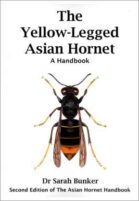
click image to zoom
Yellow-legged Asian hornets cause three important problems for humans: they love eating bees, especially honey bees; if you get too close to a nest they can be very aggressive; and they are voracious predators of our native insects. There has been much research since I published the first edition in 2019. This updated and expanded version is divided into three…
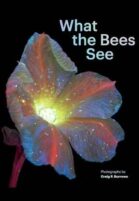
click image to zoom
'Bees see in the ultraviolet spectrum. Their world is completely foreign to the human eye, full of electric, alien colours and luminous, vibrant light that we can only imagine. Shooting UVIVF doesn't show us exactly how bees see the world, but it does enable us to better contemplate pollinator vision and understand this vital species and its importance to the…
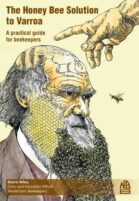
click image to zoom
The Honey Bee Solution to Varroa explains the practical steps beekeepers can take to identify and select for easily observable Varroa-resistant traits in their colonies. The science behind the bees’ mechanisms for controlling their mite populations is explained, in what is a bee-led solution to the biggest challenge facing the European honey bee. Steve Riley is the current Chair and…
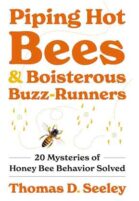
click image to zoom
Piping Hot Bees and Boisterous Buzz-Runners takes readers inside a world seldom seen even by beekeepers, shedding light on twenty of the most compelling mysteries of honey bee behavior. Thomas Seeley has devoted a lifetime to the study of honey bees and their colonies, unraveling the secrets of these wondrous insects in a career spanning six decades. In this book,…
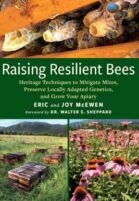
click image to zoom
Raising Resilient Bees offers a natural, sustainable, and replicable model for hive health and prodution, making it the comprehensive source for new and experienced beekeepers. Increasing pest and disease pressure presents an unprecedented challenge for the modem honey bee. Hobby and commercial beekeepers alike continue to experience troubling rates of mortality for their colonies, with deleterious consequences for the stability…
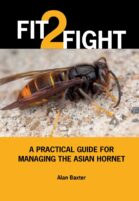
click image to zoom
Asian Hornets are here to stay, but it’s not the end of the world. It’s not the end of beekeeping. But it could be the end of beekeeping as we presently know it. For our bees to survive the ravages of predation by Asian Hornets, and to continue to thrive, we may need to change the way we keep our…
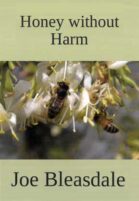
click image to zoom
Many who are concerned about ecology and the ethical treatment of animals argue that eating honey is harmful to bees and the environment. I believe there are valid reasons for their concerns in the way that most honey is produced. Here are some of the practices in worldwide use that I think exploit and harm bees: * Feeding sugar or…
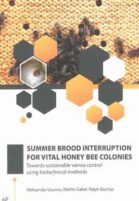
click image to zoom
Aleksander Uzunov
Martin Gabel
Ralph Büchler
The parasitic varroa mite remains the most serious problem for honey bee colonies worldwide. Despite various chemical treatments, many beekeepers still lose their colonies each year. This book sets out the authors' novel vision and practical steps on to how to manage bees for varroa control using a "nature based beekeeping" approach. With clear step-by-step charts on what to do…
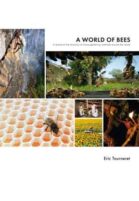
click image to zoom
A quite outstanding world wide photographic record of bees and beekeepers. Internationally recognised bee photographer Éric Tourneret began his great global photographic exploration of beekeeping traditions in the early 2000s. His photographs, taken over ten years in 20 countries on the five continents, record the diversity of honey-gathering methods around the world, from the archaic and physically strenuous to modern…

click image to zoom
In Pursuit of Liquid Gold tells tells the fascinating story of the earliest beginnings of beekeeping in South West England with special mention of monastries, weather protection and the beekeepers of the past. It also includes details of surviving bee boles with a very detailed list of them in Devon, Cornwall, Somerset and Dorset. There are 9 colour pictures and,…
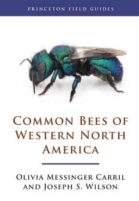
click image to zoom
Olivia Messenger Carril
Joseph S. Wilson
A PORTABLE, FULL-COLOR PHOTOGRAPHIC GUIDE TO THE MOST COMMONLY SEEN BEES IN THE WESTERN UNITED STATES AND CANADA. Bees play a vitally important role in the pollination of native plants and agricultural crops around the globe. These stunningly beautiful insects come in a wide range of sizes, shapes, and colors. There are more than 3,000 species in western North America,…
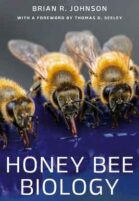
click image to zoom
"Honey Bee Biology will become the new definitive textbook for entomology courses, research scientists, science writers, and scientists interested in bees as a model system. Beekeeping teachers and keen students will buy this book as will the curious beekeeper just wanting to learn new things and be a better beekeeper." Ann Chilcott. Scottish Expert Beemaster and author (BBKA News Incorporating The…
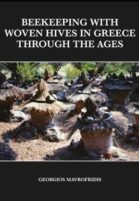
click image to zoom
This book is an original study on beekeeping which, apart of course from the existing modern literature, is based on four pillars: 1. the study of the relevant ancient Roman and Byzantine literature; 2. the study of the works by foreign travelers who visited Greece from the 17th to the 19th centuries to gather information on beekeeping and wicker hives;…
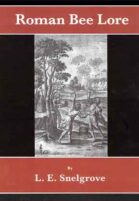
click image to zoom
REVIEW by Michael Freedman FCA, FPFS " Snelgrove was a school master and bee inspector for Somerset, he gained a MSc for research into bee diseases in 1920 and a MA in 1922 for Beekeeping in Roman Times, and was a life member of the BBKA and a past president. As a classicist, it enabled him to read the ancient…
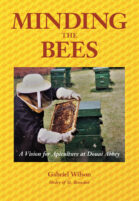
click image to zoom
All beekeepers will be aware of the important work carried out in the last century by Brother Adam and his helpers at the Benedictine monastery of Buckfast Abbey. Less is known, however, of beekeeping since 1933 at Buckfast's sister Benedictine monastery of Douai Abbey where an interest in the craft continues under the present beekeeper and monk, Dom Gabriel Wilson.…
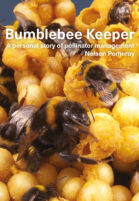
click image to zoom
Forget what you know of (honeybee) beekeeping: this is a different game. In this unique and detailed text Nelson Pomeroy lays it bare. In a candid account of his career as a student, scientist, businessman and teacher, he details most aspects of working with bumblebees: outdoor nesting sites, laboratory observation hives, crop pollination and commercial-scale rearing. His innovations range from…
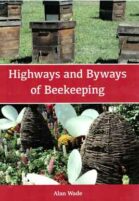
click image to zoom
Alan Wade is a research scientist and has kept bees for well over forty years. In Highways and Byways of Beekeeping he ventures down some of the many. back roads beekeepers have taken. He explores the limits of our knowledge and understanding of honey bees while introducing us to some of the lost arts of beekeeping practice. Highways and Byways…
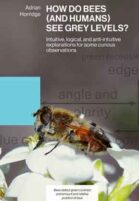
click image to zoom
Since the nineteenth century there have been many descriptions of bees' ability to discriminate coloured papers, but it is less well known that they can be trained to come to a grey target showing no colour. From their recognition of grey, and ability to discriminate light grey from dark grey, and from white and black, von Frisch concluded that bees…
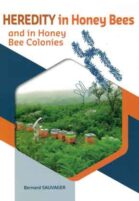
click image to zoom
A drone dies after mating. Nonetheless, his sperm will later transmit 100% of his genes to each of his daughters. A queen, on the other hand, because her egg is produced by cell division, will only transmit 50% of her genes to each of her offspring. To add to the complexity of honey bee genetics, a queen will mate with…
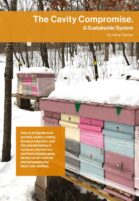
click image to zoom
How to integrate mite control, swarm control, honey production, and the overwintering of nucleus colonies in a northern climate using biotechnical controls and leveraging the bees’ own abilities. People with a beginner’s interest in bees are often disturbed to learn that their bees will die without some form of varroa mite control. I was, and some of mine did. Yet…
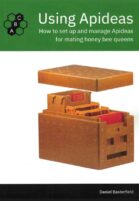
click image to zoom
Queen raising is one of the most rewarding aspects of beekeeping, allowing beekeepers to propagate the desirable characteristics of their best colonies throughout their apiaries. Father and son commercial beekeepers Ken and Dan Basterfield, both holders of the National Diploma in Beekeeping, have been using Apideas to raise their own queens for forty years. Here they present the tips and…
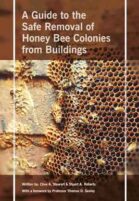
click image to zoom
Clive A. Stewart
Stuart A. Roberts
The general public are becoming more aware of the plight of ‘bees’. This is, more accurately, the plight of pollinating insects. Dave Goulson, in his book, (see Silent Earth: Averting the Insect Apocalypse) has called it the ‘Insect Apocalypse’ and this has meant that many people now believe honey bees to be a protected species. The term ‘bees’ in this…
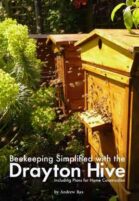
click image to zoom
The Drayton Hive is a hybrid of several established hive designs, combining some of their different strengths and avoiding some of the problems inherent in their use. It does not involve heavy lifting or the use of mechanical extractors for honey production; all-round, all-year insulation is built in, and it requires no extra space for winter storage. In the hive’s…
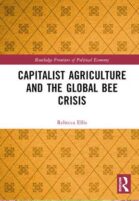
click image to zoom
Capitalist agriculture relies heavily on the pollination work of bees, but this system harms bees in innumerable ways. Indeed, human agriculture is one of the main culprits for the declining populations of wild bees and the declining health of honeybees. This book presents a political ecology of pollination that critically examines how managed honey bees and wild bees are harmed…
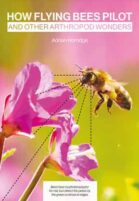
click image to zoom
In the visual system of the honeybee, feature detectors for the amount of blue and distribution of green vertical edges were slowly revealed over the past century, as outlined in a companion booklet (Horridge, 2021). The method was to train bees on one of many targets and then test the trained bees until they failed when the last remaining cue…
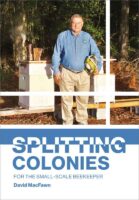
click image to zoom
Splitting Colonies is an important means of colony increase and swarming mitigation. Splitting is an art as much as a science. It should be noted splitting timing will vary year to year based on the local weather and conditions. This book contains information on when to split based on when the nectar flow starts in your area. Several splitting methods…
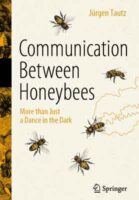
click image to zoom
How Do Bees Find Flowers? During the history of bee research, scientists have peered deep into the inner life of bee colonies and learned much about the behaviour of these insects. Above all, the bee waggle dance has become a famous and extensively discussed phenomenon. Nevertheless, recent insights reveal that while bees are social insects inside the hive they also…
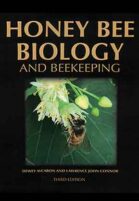
click image to zoom
Dewey Caron
Lawrence J. Connor
Since its release in 1999, Honey Bee Biology & Beekeeping has become a widely accepted textbook of apiculture. Universities use it to teach college students beekeeping and beekeepers use it to teach other beekeepers. It concentrates on the ‘why’, ‘how’ and ‘when’ of beekeeping. It explains bee and beekeeping basics in a manner meaningful to people who lack an intensive…
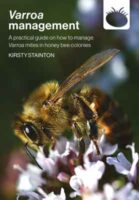
click image to zoom
This resource will provide you with everything you need to know for practical management of Varroa mites, it is the essential user-guide to Varroa treatments. In this guide you will learn: » Why Varroa mites are such a serious pest of honey bees. » How to spot signs that a honey bee colony is carrying a high mite burden. »…
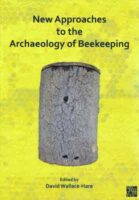
click image to zoom
New Approaches to the Archaeology of Beekeeping aims to take a holistic view of beekeeping archaeology (including honey, wax, and associated products, hive construction, and participants in this trade) in one large interconnected geographic region, the Mediterranean, central Europe, and the Atlantic Façade. Current interest in beekeeping is growing because of the precipitous decline of bees worldwide and the disastrous…
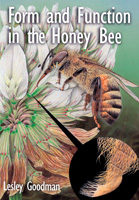
click image to zoom
Lovely book for serious students of honey bee biology. It has wonderful illustrations and is packed with information. If you are an entomology student or studying for BBKA exams then it is a worthwhile read and is considered a standard text. "The book focuses on detailed descriptions of bee body parts and how they work, but the title is woefully…
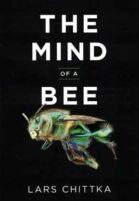
click image to zoom
Most of us are aware of the hive mind-the power of bees as an amazing collective. But do we know how uniquely intelligent bees are as individuals? In The Mind of a Bee, Lars Chittka draws from decades of research, including his own pioneering work, to argue that bees have remarkable cognitive abilities. He shows that they are profoundly smart,…

click image to zoom
Stuart Roberts is a Master Beekeeper, a member of the BBKA Examinations Board and a Trustee of the International Bee Research Association. The volume is a brief guide to one hundred plants significant to honeybees. Photographs are taken by the author during his work with apiaries in the Midland Counties. Each plant is described under the headings: Plant family; Common…
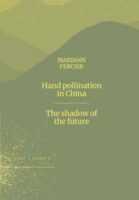
click image to zoom
Not the normal beekeeping volume, tells little about bees BUT highlights the dangers of losing them. This high quality photographic volume by an ethnographic researcher tells a visual story of the possible dangers facing us all on this planet. Will be of interest, not only to beekeepers, but all with concerns on pesticide usage and global warming. "Hand pollination in…
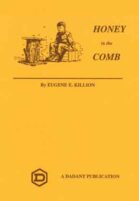
click image to zoom
Originally published in 1981. This book is a result of a lifetime study of the equipment and practices for the production of fine comb honey. It is also the purpose of this book to encourage only the finest quality of comb honey to be offered to our markets. The classic title for the production of comb, section and chunk honey.…
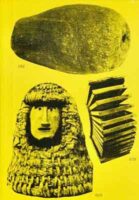
click image to zoom
An artistic project showing how man has housed bees over the centuries. The patenting and success of the modern hive in 1852 largely eliminated diversity in beehive design and its previous techniques have been overlooked. Using an array of archive images, this book uncovers that forgotten history in hive innovation and creates a common ground for future beehive research.
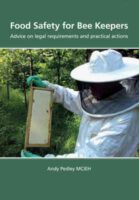
click image to zoom
In this book, Andy (an Environmental Health Officer for 46 years and a beekeeper for 30) explores the Consumer Protection law that applies to beekeepers and bee farmers. The book principally deals with Food and Food Safety, and includes a full HACCP that covers both extracted and comb honey. The book includes other products - Candles, Melts, Wraps and Polishes.…
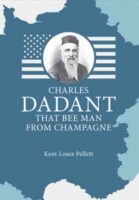
click image to zoom
The intriguing story of the establishment of the greatest bee supply company in America. The Dadant name is familiar to beekeepers throughout the world as one of the principal manufacturers of beekeeping supplies, and the publisher of The American Bee Journal, for more than 150 years. This book tells the story of Charles Dadant, “that Bee Man from Champagne”, who…
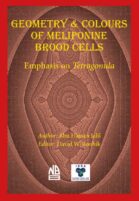
click image to zoom
Abu Hassan Jalil
David W. Roubik
This literature is for enthusiasts who have difficulty remembering scientific names but can recognize geometric shapes. A preliminary look at what is termed as the most difficult genus in the Indo-Malaya stingless bee group to identify and differentiate between species by morphology. This book will take the readers on a journey to explore the various aspects of Tetragonula brood structure…
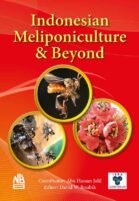
click image to zoom
Abu Hassan Jalil
David W. Roubik
Synopsis: The 3rd instalment in a series of literature on ASEAN Meliponiculture and Beyond, this portion entails the varied and diverse Stingless Bee Fauna in the Indonesian archipelago. We attempt to bridge the different beekeeping and culture methods in hiving, colony acquisition or multiplication, forage provisioning, nest building material sources and regulating extreme weather or local conditions. To address conservation…
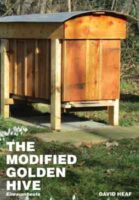
click image to zoom
Horizontal hives with frames are becoming increasingly popular in Europe and North America. One of these is the golden hive or Einraumbeute, developed at Mellifera Association in Germany, based on Dadant-size frames rotated ninety degrees. The resulting deep format allows for a vertically uninterrupted brood nest and a deep honey crown that is good for wintering. This book describes modifications…
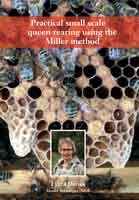
click image to zoom
Rearing new queens for our colonies is a rewarding and important practice that often gets mis-labelled as too difficult and complicated. This, is simply, not correct and with some planning and attention to detail new queens can be produced at a fraction of the cost that you will pay for them elsewhere. Queen rearing is an organised process where thought…
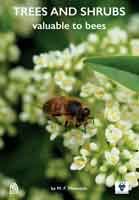
click image to zoom
This list of tables is a sequel to the Association's leaflet "Save our Pollinating Insects"- We have received many enquiries as to how those with opportunities to plant trees and shrubs on public or private land can implement the plea contained in the leaflet to conserve our economically useful pollinators. The books and articles available have proved curiously in-adequate-in assessing…
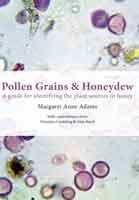
click image to zoom
This book describes, in detail, a simple approach for beekeepers, to identify the plant sources of their own honey. They will occasionally find they have a special honey, and then the jars can be labelled accordingly. From 2019 to 2021, beekeepers from The UK and Continental Europe sent me samples of their honey, and the collection of digital photos from…
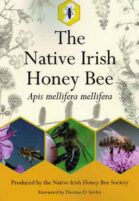
click image to zoom
A collaborative work with contribution from expert beekeepers and scientists throughout Ireland. It contains everything you need to know about the Native Irish Honey Bee - from evolution to genetics and into the future with conservation, and 'how to' sections from commercial beekeepers. Includes a practical section with step by step instructions on queen rearing and bee-breeding techniques. Most beekeeping…
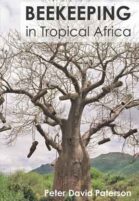
click image to zoom
Small-scale beekeeping is an attractive cash crop option for resource-poor farmers in the tropics. It demands little in the way of time, finances or natural resources, and the honey and beeswax harvested can be processed in the home and sold locally. At the same time, pollination by honeybees will increase the yields of many staple food crops. This book, through…
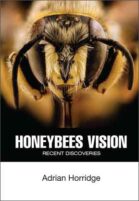
click image to zoom
Professor Adrian Horridge has thoroughly enjoyed a long and productive career in scientific research. At 17 he won a scholarship to St John's College Cambridge, where he spent 10 years, from student to a fellowship, ending in the Zoology Department working with new techniques of recording from nerve cells. Some of this time was spent at the Naples Marine Laboratory…
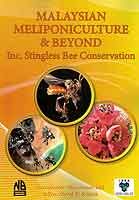
click image to zoom
Abu Hassan Jalil
David W. Roubik
This is the second instalment of the "Meliponiculture and Beyond" Series. It covers the meliponiculure activities and the spectral produce from stingless beekeepers and conservationists efforts in Peninsular Malaysia and East Malaysia on Borneo Island. Scrutinizing the regional stingless bee fauna and floral diversity with crop pollination potentials. The prospects of highland Stingless Beekeeping is examined with the establishment of…
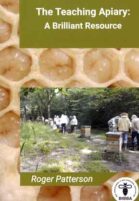
click image to zoom
This book provides help and information for all beekeepers. For BKA officials, demonstrators and apiary managers there is guidance to set up a facility if none exists, with suggestions for improving apiaries already in existence. The ordinary beekeeper who is keen to learn has an indication of what they should seek to gain from their local teaching apiary. There is…
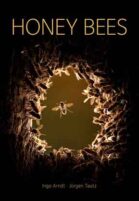
click image to zoom
Bees are a symbol of nature conservation. People all over the world are studying their fate and the threats posed to them by human activity and biodiversity loss. This stunning photographic record captures for the first time the unique way of life of the forest-dwelling honey bee. A lavish, picture-led book, this is a unique collaboration between Germany's leading bee…




















































